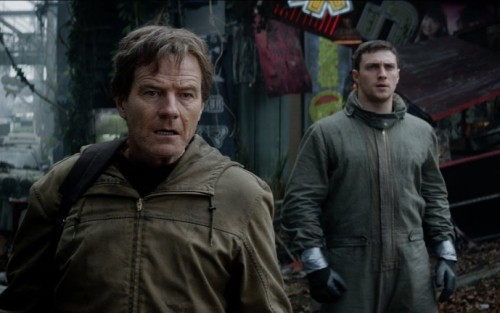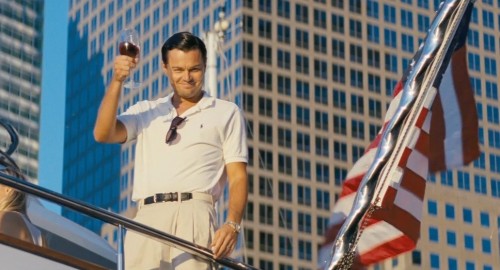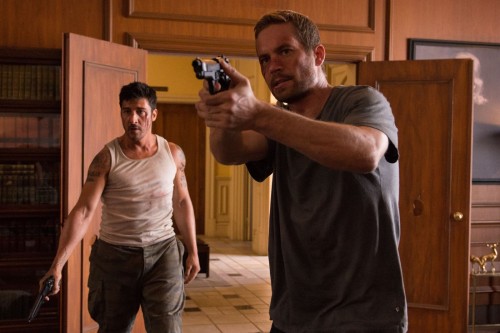By Greg Popil
A massive, looming figure towers over the new quasi-remake, sort-of reboot of “Godzilla.” This figure, once reduced to a one-dimensional comedy player, has grown over the years to inspire awe and terror, and his very presence is enough to make audiences quake with anticipation, as they wait to see him utterly destroy every obstacle in his path.
But enough about Bryan Cranston. An American version of the Godzilla story is a dicey proposition at best. Much like (as Quentin Tarantino pointed out in “Inglourious Basterds”) King Kong will always be a quintessentially American story, the Godzilla series, even its goofier sequels, can never be untethered from the story of Japan.
This is a serious problem that is smartly worked by British director Gareth Edwards. Working from a template based on last year’s big monster movie “Pacific Rim,” Edwards and screenwriter Max Borenstein turn “Godzilla” into a global disaster movie, beginning with a prologue that incorporates the Bikini Atoll nuclear tests (an early inspiration for the original “Godzilla”) before moving to the Philippines in 1999, where an ancient, massive horror is awakened. Said horror makes its way to Japan, where Joe Brody, the managing engineer of a nuclear power plant (Cranston) and his son Ford are dealt a devastating personal blow in the disaster that follows.
That son, played in present day by Aaron Taylor-Johnson, grows up to be a military specialist on disarming nuclear weapons (the sound you just heard was one shoe dropping), who is coming home to his beautiful wife (Elizabeth Olson) and son in San Francisco. Before he can so much as settle in, however, he is dragged by his father’s obsession back to the site of the nuclear disaster, where they uncover the secrets being kept by both the American and Japanese governments (represented by scientists played by Ken Wanatabe and Sally Hawkins).
Note: I always try to keep my reviews spoiler-free, but at this point there’s virtually no way to continue without giving a couple things away. Proceed with caution.
The monster, as it turns out, is not Godzilla, but a new, winged-insect creature (eventually named Muto). The big guy does not show up until Muto begins his rampage, acting, as Wanatabe predicts, as a balancing force of nature, protecting humanity against the monsters. Going the route of the later Godzilla movies (in which he fends off any number of giant monsters) instead of the earlier ones in which Godzilla himself is the threat is a bold move, but the film spends the first two acts almost entirely focusing on human attempts to thwart Muto. The first few rampages and monster fights are almost entirely shot as glimpsed from the point of view of panicked bystanders, or via security or TV footage (one bit shown on Olsen’s television provides a rare moment of levity). Edwards wisely realizes that, if you are going to feature the same monsters fighting more than once, you have to avoid showing off the goods until nearly the end of the movie or it will risk getting repetitive awfully quick.
Edwards also works hard to bring the disaster down to a human scale. There’s virtually none of the lame humor of Michael Bay’s Transformers series, and while the people massacred obviously cannot be individually tolled, the somber tone fits what is ostensibly a horrifying situation. Virtually every shot of the big fight involves at least one quick glance back to the people desperately trying to get out of the monsters’ way.
The script falters, however, in trying too hard to shoehorn Ford into every single sequence. Taylor-Johnson has done fine work elsewhere, particularly in the titular role of “Kick-Ass,” but he’s surprisingly wooden here, and has no chemistry with Olsen, a woman so saintly that she has no problem with Ford going off to Japan to bail his father out of jail after he’s already been away for 14 months (have these people never heard of Western Union?). Some of Ford’s scenes work, such as a sequence on a railroad bridge that invokes a Lovecraftian feel of dread, but by the time Ford is halo jumping out of a plane at 30,000 feet, which seems like something you might have to specifically train to do for more than a few hours, it gets a bit ridiculous.
Thankfully, the supporting cast more than picks up the slack. Juliette Binoche brings a wonderful gravity to her few scenes as Ford’s mother; David Strathairn commands every scene he is in as a U.S. Admiral without resorting to histrionics in the slightest, and Wanatabe, as the sole Asian in the main cast, gracefully handles the burden of representing the nuclear-war-is-horror metaphors that all Godzilla movies must bear.
At the end of the day, however, the twin attractions of “Godzilla” are Bryan Cranston and the monster himself. Cranston, coming off five seasons of “Breaking Bad” that were nothing short of revolutionary, is flat-out awesome here, breathing fire into every scene he has as a paranoid, grief-stricken crusader who is desperate to know the truth about what happened at his plant. He takes what could have been a nothing role in a summer monster movie and, no kidding, makes it Oscar-worthy, and you feel the loss of his presence whenever he is off-screen. And the big guy himself looks amazing, incorporating the classic Toho look and roar into a creature that acts and moves, for the first time ever, like a real dinosaur. Edwards smartly reserves any signature Godzilla fighting moves so that when they come, it’s as exhilarating as any action movie moment this year. For all its flaws, this is the best Godzilla movie in decades, and maybe the best since the first one.
Rating: 70/81




Leave a Reply